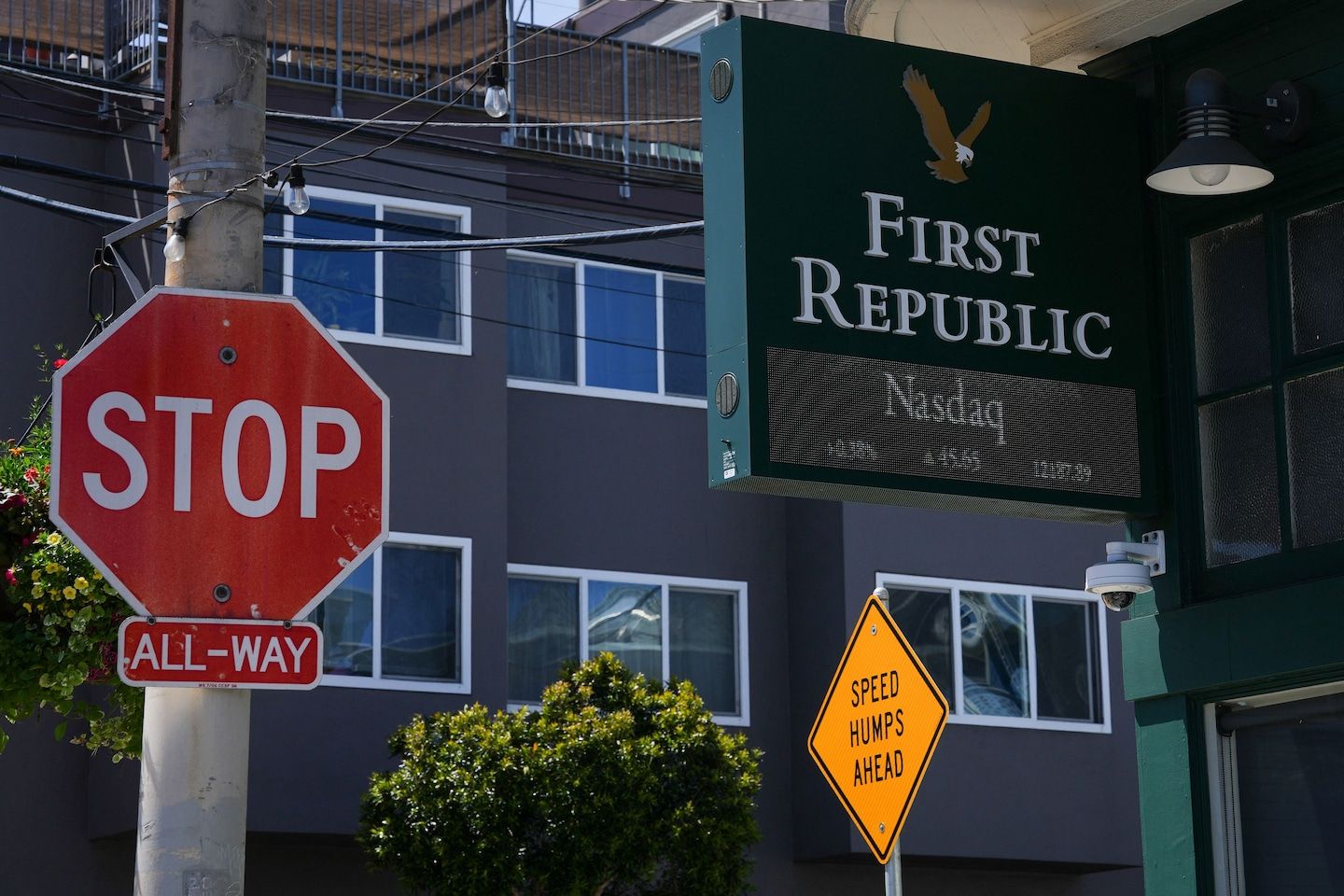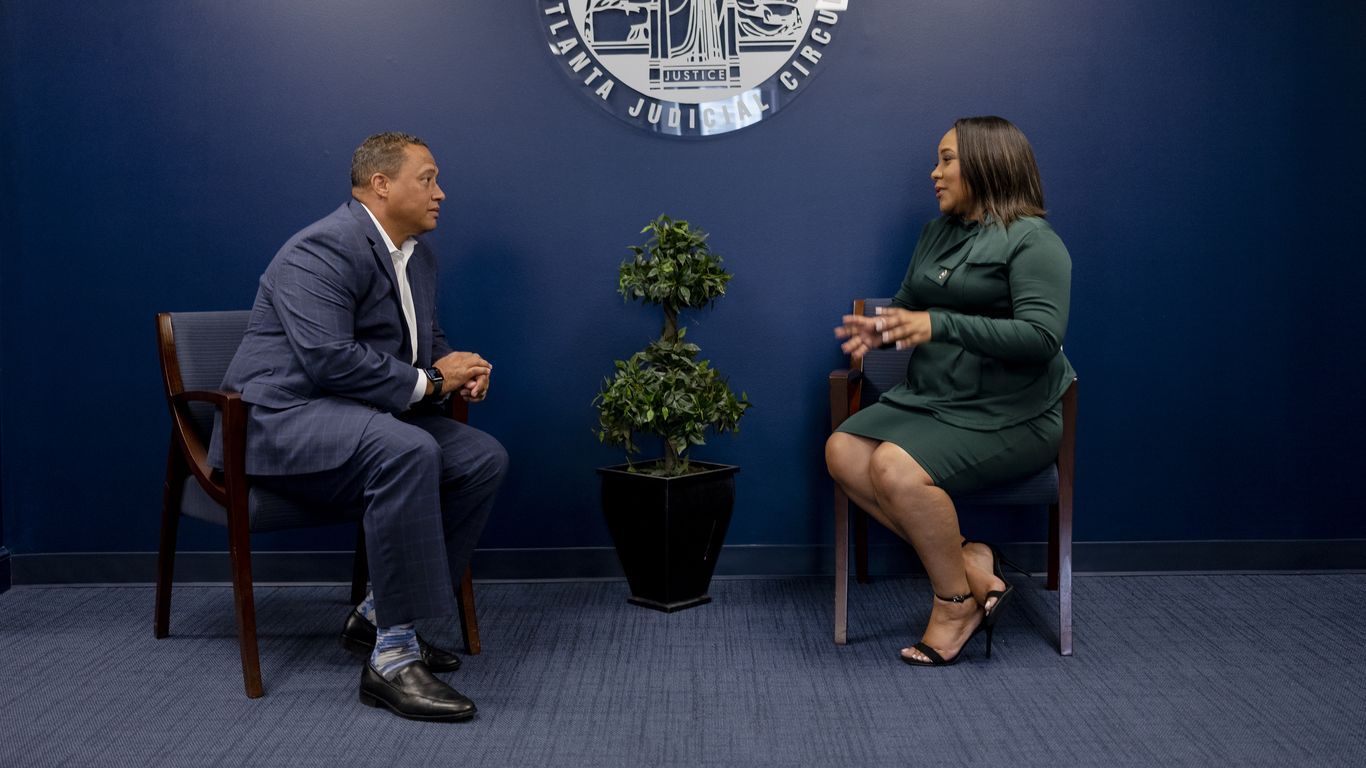FDIC likely to seize First Republic Bank
Listen 6 min Comment on this story Comment Gift Article Share
Federal regulators are likely this weekend to seize First Republic Bank, a once high-flying lender that was humbled by its inability to adjust to rising interest rates, and sell it to a larger financial institution, according to two people familiar with the matter who spoke on the condition of anonymity to describe confidential talks.
Seven weeks after a crisis in U.S. regional banking first flared, the potential fix for First Republic’s troubles suggests that the worst fears of wider financial damage are easing, analysts said.
Under the emerging plan, the Federal Deposit Insurance Corporation, the bank’s principal federal regulator, would place First Republic in receivership before quickly selling it. As the “receiver” for a failed bank, the FDIC temporarily manages its affairs and seeks to obtain the greatest value possible for its remaining assets.
Advertisement
Regulators in recent days have solicited bids from interested banks, with JPMorgan Chase having emerged as the high bidder so far, one of the people said. The nation’s largest bank last month led an 11-bank coalition that deposited $30 billion in First Republic as a show of confidence.
First Republic’s shareholders would be wiped out as a consequence of the government’s takeover-and-sale plan. First Republic would be the third U.S. bank to fail since March 10, when Silicon Valley Bank collapsed, igniting fears of broader financial distress.
Since last month’s dramatic events, however, Treasury Secretary Janet L. Yellen and Federal Reserve Chair Jerome H. Powell have repeatedly said the nation’s banks are sound.
That verdict was bolstered earlier this week, when another regional bank that drew scrutiny last month, PacWest Bancorp, said it had received an influx of deposits in recent weeks, a sign of good health. And even as First Republic neared collapse Friday, an index of regional bank stocks rose.
Advertisement
“At this point, it does seem that we’re through the worst of it,” said David Smith, a banking analyst with Autonomous Research. “It’s not the risk of broader contagion to the banking system we were all worried about a month ago. This should be the end of it.”
It is not clear whether the government will guarantee all First Republic deposits, including those above the $250,000-per-account federal limit, as it did for the two banks that failed last month. Officials want to discourage any potential outflow of funds from other midsize banks, but they fear that solution might be perceived as benefiting whichever Wall Street giant acquires the troubled bank, the people said.
Despite its current travails, First Republic remains attractive to potential owners. The bank has been profitable every year since its founding in 1985 and retains a lucrative wealth management business, which caters to affluent individuals. It also is known for careful loan underwriting.
Advertisement
“The reputation is quite strong,” said David Chiaverini, an analyst with Wedbush Securities.
First Republic, however, also comes with tens of billions of dollars in unrecognized losses from the securities and loans on its balance sheet. It is not clear whether the new owner is expected to hold those assets until they mature or whether it will receive some other consideration to sweeten the pot.
Talks over the bank’s fate hurtled toward a conclusion one day after regulators released a pair of reports that blistered government supervisors and bank executives for the failures last month of two midsize institutions in California and New York.
“Silicon Valley Bank failed because of a textbook case of mismanagement by the bank. Its senior leadership failed to manage basic interest rate and liquidity risk. Its board of directors failed to oversee senior leadership and hold them accountable. And Federal Reserve supervisors failed to take forceful enough action,” concluded Michael Barr, the Fed’s vice chair for supervision.
Advertisement
A separate FDIC report on the collapse of Signature Bank of New York blamed that bank’s management for ignoring risks — and also faulted the agency itself for not pushing executives to improve their operations.
March shock waves
The two bank failures last month spooked investors and sent shock waves throughout the global financial system. Within days of SVB’s collapse, Credit Suisse, a global giant that first opened its doors in 1856, was absorbed by UBS, its Swiss rival.
Investors also grew skittish about the survival of other regional U.S. banks, including First Republic.
Shares of First Republic were in free fall all week. The stock price, which peaked in early February at $147, began the week around $14 and closed Friday at $3.51.
Like SVB, First Republic placed financial bets during a period of ultralow interest rates that soured once the Federal Reserve began raising the cost of credit. Over the past 14 months, the central bank has raised its benchmark lending rate by about 5 percentage points, the fastest pace in roughly 40 years.
Advertisement
Higher rates have become a money-losing proposition for the San Francisco-based bank.
It is earning a return of around 3 percent on the government securities it owns and on more than $100 billion in residential mortgages, which were issued when rates were lower. But now it must pay almost 5 percent for fresh funds from the Fed and the Federal Home Loan Banks.
So the bank is locked into long-term bets that generate limited returns while having to pay ever increasing amounts to obtain new money for its business.
Moreover, First Republic catered to a wealthy customer base, which meant many of its accounts exceeded the federal deposit insurance limit of $250,000 per account. Almost half of the bank’s $104 billion in deposits was uninsured.
So when the rapid-fire failures last month of SVB and Signature Bank of New York raised concerns about the industry’s soundness, rattled depositors fled First Republic. Bank executives said earlier this week they had lost more than $100 billion in deposits in recent weeks.
Advertisement
It’s a steep fall for First Republic, which was well-regarded in the banking industry and enjoyed rapid growth in recent years. Over the past four years, its total assets more than doubled to $212 billion, and its workforce grew to more than 7,200 employees from around 4,500.
But the combination of low-yielding assets and a large uninsured deposit base made the bank vulnerable, analysts said.
Some other regional banks might also stumble under the pressure of higher interest rates. But unlike in the 2008 financial crisis, there is little danger of First Republic’s ills infecting the nation’s largest banks. Tighter regulations, including a requirement to hold much more capital in reserve to absorb any losses, makes them safer today than 15 years ago, analysts said.
“This is the last major wobble from a run on all the banks that looked like SVB,” said Steven Kelly, a senior researcher at the Yale Program on Financial Stability. “This is not a run up the food chain of banks that are even bigger.”
Rachel Seigel contributed reporting.
GiftOutline Gift Article
Source: The Washington Post


